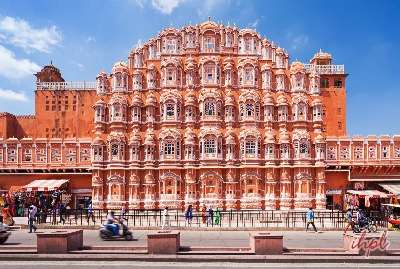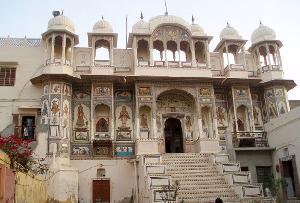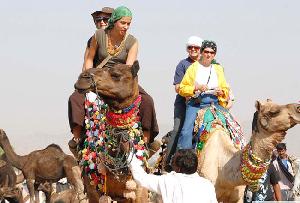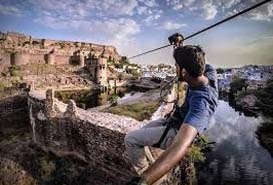Located in the Jhunjhunu district of Rajasthan India, Nawalgarh forms part of the Shekhawati region famous for its grand havelis that have some exquisite frescoes- some of the best in Shekhawati region. Nawalgarh is home to some of the best finest Havelis in Rajasthan and the Chhauchharia Haveli is one of them. Other notable havelis in Nawalgarh are Bhagton ki choti Haveli, Parusrampuria Haveli, Dharni Dhakra Haveli, Hira Lal Sarowgi Haveli and Geevrajka Haveli.
The Chhauchharia Haveli belongs to and was established by the Chhauchharia family of Nawalgarh who were renowned as traders. The Chhauchharia haveli was established in the 19th century and speaks loads on the wealth and power of the traders, who pretty much controlled the reins of economy in the region.
It was a time when the royalty had already been subdued by the British and the traders of Rajasthan were flourishing. These traders slowly began to gain grounds as notable and powerful citizens, and influenced local administration considerably. The havelis built by the Rajasthani traders speak volumes of their wealth; these havelis were their status symbol; the size of the havelis was directly proportional to the might of their owners.
The exquisite frescos to be seen on the walls and ceilings of the Chhauchharia haveli India are a maddening riot of colors with detailed miniature paintings depicting various themes. Local legends, scenes from Hindu mythology, scenes from the life of Lord Krishna, floral and block motifs gain predominance. Blue, green, yellow, and maroon are the most commonly seen colors. These miniatures trace their origin to the miniature painting tradition that originated and evolved in the Shekhawati region of Rajasthan.
The Chhauchharia Haveli has a layout common among the havelis in Rajasthan. A massive gate opening into a courtyard that again opens into another courtyard is the basic format. The havelis in Rajasthan are built around courtyards. Courtyards formed very important part of every household. The courtyards were also centre of much activity. Drying of spices, other miscellaneous chores were all performed in the courtyards. The courtyards were also used as places to sleep at night, since the desert heat gets unbearable indoors.












